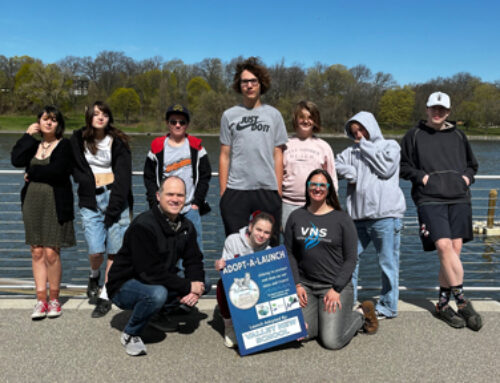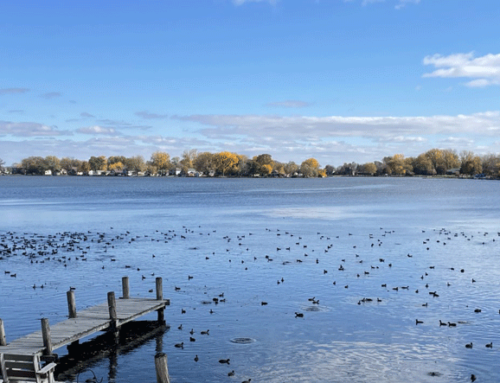There were paint flakes everywhere. It was a hot August day, but it had looked like we had gotten a light January snow dusting. I bought a lead test kit from the hardware store and hurried back. The test turned a dark, dreadful pink color. Positive.
Some exterior renovations had been completed (carelessly) shortly after we had signed the apartment lease, but before we were to move in. The landlord came and swept up the chips and debris along the driveway, but chips remained in the grass, in the concrete cracks, and a fine film of dust coated the side of the house where the renovations had occurred. I could write my name on it. With a two-year-old at home and one more on the way, I was more than concerned.
After many frustrating conversations with the indifferent landlord, we determined that breaking the lease and moving was less of a hassle than pursuing the legal rights we had as tenants.
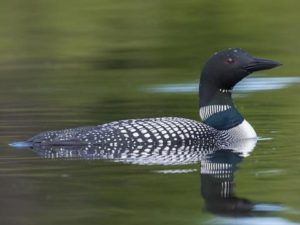
Photo: Cornell University
Lead poisoning is a common conversation when it comes to infants and toddlers. It can cause irreversible damage, even death. But there is a lesser known, yet equal risk to wildlife. Lead is banned from gasoline, paint, and many other products used today. However, lead still remains a common component of fishing tackle and can easily end up being digested by loons and other animals such as bald eagles, herons, and snapping turtles.
Waterfowl consume small stones for their gizzard. A small lead split shot can easily be mistaken for stone, and a single small sinker is 100% fatal. Or, fish-eating birds will catch slow-moving fish that have been impaired by lead tackle and ingest it that way. Lastly, loons will chase lead fishing tackle and swallow it.
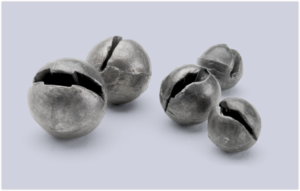
Photo: www.bulletweights.com
What can you do? (from Loonwatch, a program of the Sigurd Olson Environmental Institute)
- Use non-toxic tackle when fishing. There are many alternatives to lead tackle, which include tin, steel, bismuth, ceramic, glass, tungsten, and composites of these materials. Many of these choices are available at a similar or slightly higher price than lead. Find an expansive list of non-lead manufacturers and retailers here.
- Dispose of your lead tackle properly—do not throw it in a lake or trash can. Take it to your local household hazardous waste collection site or a scrap metal collector/recycler. In Wisconsin, there is a list of places that accept lead year round maintained on the Wisconsin Department of Natural Resources website.
- Never fish near loons. Use the 200-foot rule.
- Spread the word—tell others about the hazards of lead to wildlife and people. Encourage the switch to non-lead sinkers and jigs.
- Ask your favorite bait and tackle shop to carry lead alternative fishing tackle.
- Help us spread the word about the dangers of lead tackle by distributing this fact sheet.
- Canada, the European Union, New Hampshire, Maine, New York, Vermont, and Massachusetts have banned the use or sale of lead tackle. Write to your local representative urging them to push similar policies.
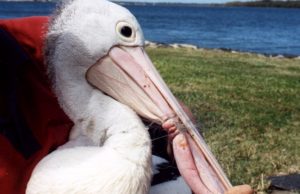
Photo: www.riverguardians.com
Monofilament fishing line is another hazard to wildlife. Monofilament line is a single-strand of strong flexible clear plastic. Most monofilament line will last hundreds of years before breaking down. Monofilament line is often discarded off boats or near shore. Wildlife has a hard time seeing the translucent line and can easily become tangled in it. Entanglement can lead to injury, loss of limbs, drowning, strangulation, or starvation. But the good news is that monofilament line can be recycled and made into products such as tackle boxes, spools for fishing line, toys, and fish habitat structures. Berkley, a manufacturer of angling equipment, has recycled over nine million miles of monofilament. That’s enough for two reels of line for every angler in the country!
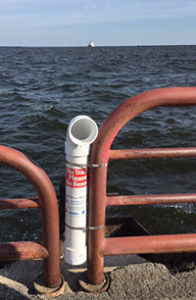
Photo: WDNR
What can you do?
- Check out the WI DNR’s pilot program to recycle monofilament line. Their page has locations where monofilament line can be recycled, and instructions on how to build your own recycling receptacle to be placed at a launch or public fishing location.
- If you are not able to recycle your line, cut it into six-inch pieces or less and dispose of them in the garbage.
- Help make the DNR’s pilot program permanent by using it, by telling others about it, and getting monofilament collection bins placed around your favorite waterways.
Winnebago Waterways is a Fox-Wolf Watershed Alliance program. The Fox-Wolf Watershed Alliance is an independent nonprofit organization that identifies and advocates effective policies and actions that protect, restore, and sustain water resources in the Fox-Wolf River Basin.
Follow the Fox Wolf Watershed Alliance’s Winnebago Waterways Program on our Winnebago Waterways Facebook page or @WinnWaterways on Twitter! You can also sign-up for email updates at WinnebagoWaterways.org.
This post was written by Austin Pethan for the Winnebago Waterways Program. Questions or comments? Contact Austin at austin@fwwa.org or (920) 920-851-4295.

